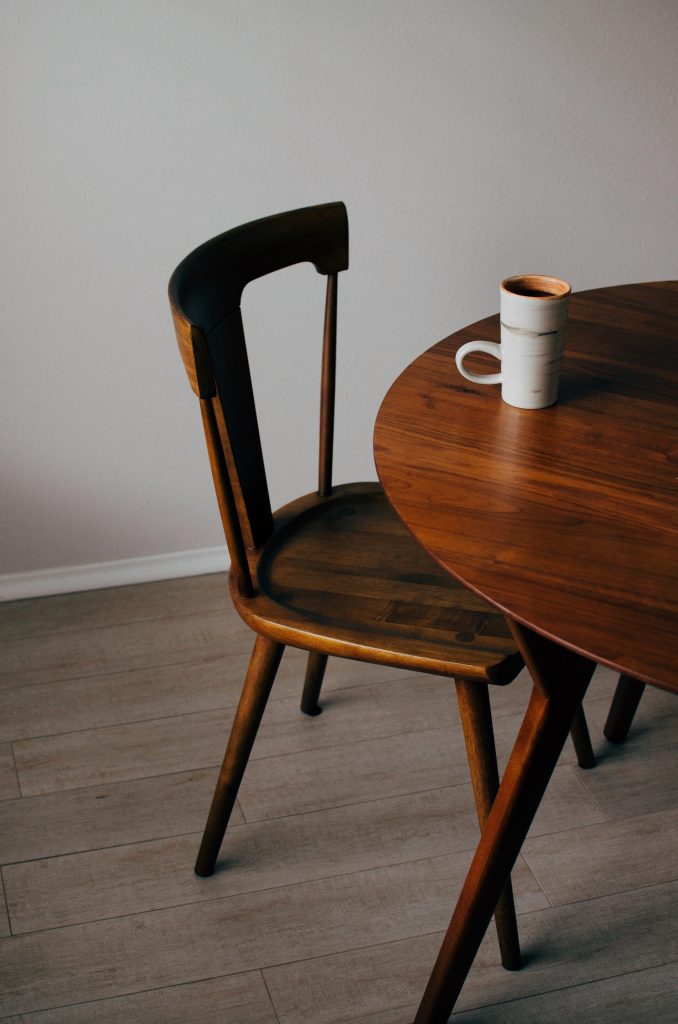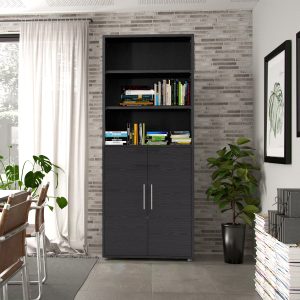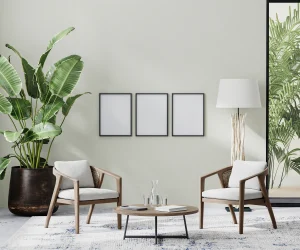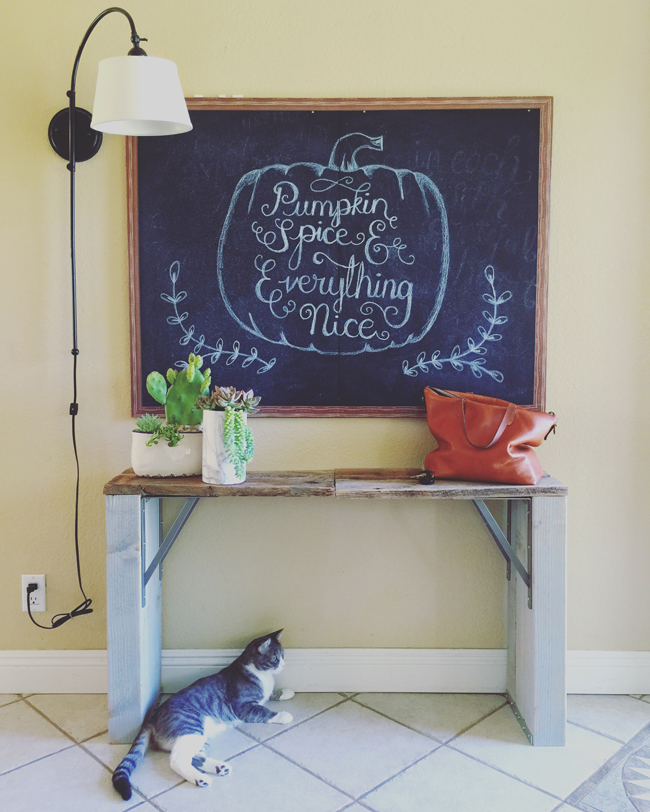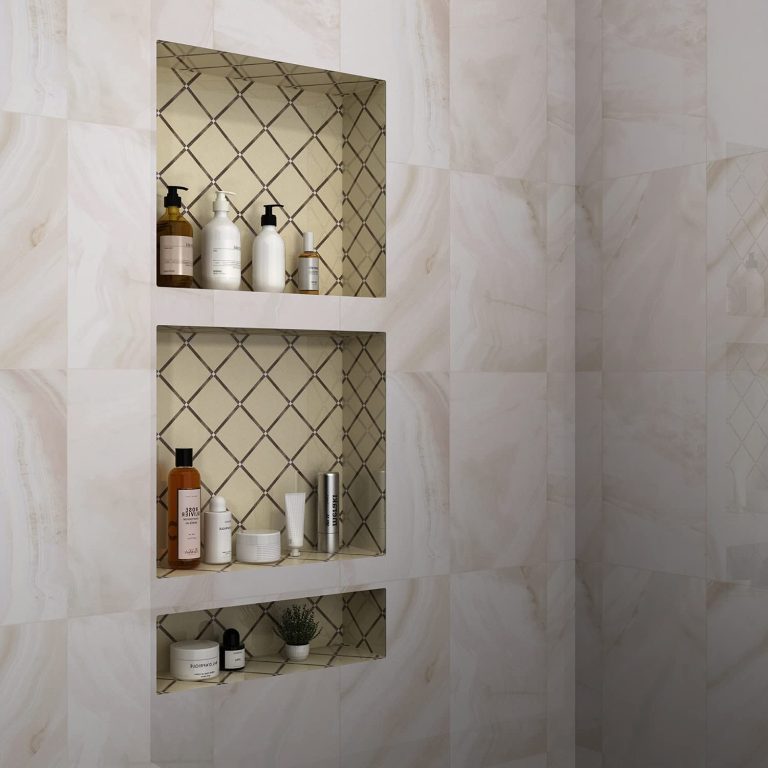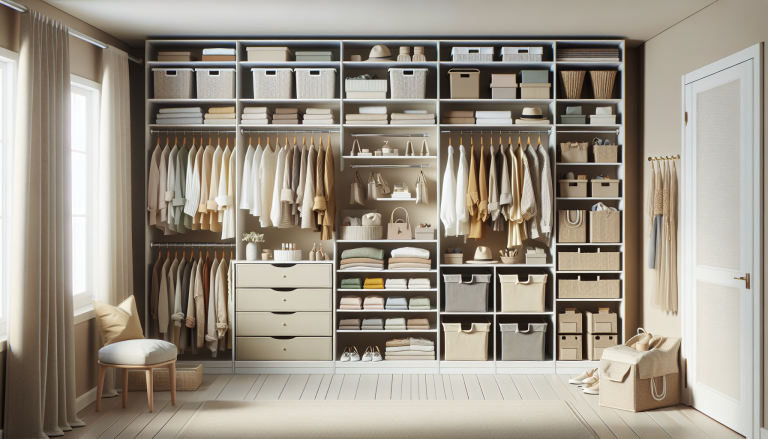Arranging furniture in a small living room can be a challenging task, but fear not! This article will provide you with some helpful tips on how to make the most of your limited space. Whether you’re looking to create a cozy conversation area or maximize functionality, we’ve got you covered. From choosing the right furniture to utilizing clever storage solutions, you’ll soon be able to transform your small living room into a stylish and functional space that feels just right. So let’s get started and make the most of every square inch!
Table of Contents
ToggleCreating a Layout
Measure the Space
Before you start arranging your furniture in a small living room, it’s essential to measure the space accurately. Knowing the dimensions of your room will help you determine what furniture will fit and allow you to plan your layout accordingly. Measure the length, width, and height of the room, as well as any doorways, windows, or architectural features that may affect furniture placement.
Consider the Functionality
When arranging furniture in a small living room, considering the functionality of the space is crucial. Think about how you will be using the room and what activities will take place there. Will it primarily be used for entertaining guests, relaxing, or as a multi-purpose room? Knowing the main function of the space will guide your furniture selections and arrangement to optimize functionality.
Identify Focal Points
Every living room has a focal point, whether it’s a fireplace, a large window with a beautiful view, or a television. Identifying the focal point in your small living room will help you determine where to place your furniture. By placing the seating area towards the focal point, you create a more inviting and cohesive space.
Define Traffic Flow
In a small living room, it’s crucial to define the traffic flow to ensure easy movement throughout the space. Consider the natural paths people will take when entering and exiting the room, and make sure to leave enough space for comfortable movement. Avoid placing furniture in a way that obstructs the main walkways, as this can make the room feel cramped and inconvenient.
Choosing the Right Furniture
Scale Down the Size
In a small living room, it’s essential to scale down the size of your furniture to create a more spacious and open feel. Opt for smaller-scale pieces that are proportional to the room’s size. Oversized furniture can overwhelm the space, making it appear even smaller than it is. Look for sleek and compact designs that provide ample seating or storage without taking up too much floor area.
Opt for Multi-Purpose Pieces
Maximize the functionality of your small living room by selecting furniture that serves multiple purposes. Look for items with built-in storage, such as ottomans with hidden compartments or coffee tables with drawers. Additionally, consider sleeper sofas or futons that can double as guest beds when needed. Investing in multi-purpose furniture allows you to make the most of your limited space without sacrificing style or functionality.
Select Light-Colored Furniture
Light-colored furniture can help create an illusion of space in a small living room. Opt for pieces in neutral or light shades, such as white, cream, or pastels. These colors reflect light and make the room feel more open and airy. Dark furniture, on the other hand, can make the space appear smaller and more cramped. If you prefer darker hues, try incorporating them in smaller accents or accessories rather than large furniture pieces.
Utilize Modular or Compact Options
Modular furniture or compact options are excellent choices for small living rooms as they allow for flexibility and adaptability. Look for sectional sofas that can be rearranged to fit different layouts or shelving units with adjustable configurations. These modular pieces can be customized to suit your evolving needs and enable you to make the most efficient use of your limited space.
Arranging Furniture Strategically
Place the Largest Piece First
When arranging furniture in a small living room, it’s often recommended to start with the largest piece first. Typically, this would be the sofa or seating area. Position the largest piece against the longest wall to create a focal point and anchor the room. By starting with the most substantial item, you can then arrange the rest of the furniture around it, ensuring a balanced and cohesive layout.
Utilize Wall Space
In a small living room, it’s essential to make the most of your wall space. Instead of placing all your furniture in the center of the room, consider pushing some pieces against the walls. This not only creates a more open feel but also maximizes the floor space in the center of the room. Utilize wall-mounted shelves, floating bookcases, or even built-in cabinets to store items and keep the floor clear.
Create Zones
Creating different zones within your small living room can help define specific areas and maximize functionality. Determine the different activities or purposes you want to accommodate and arrange your furniture accordingly. For example, create a cozy seating area with a rug and armchairs for conversation, a small workspace with a desk and chair, or a reading nook with a comfortable chair and a bookshelf. By dividing the space into zones, you create a sense of organization and make the room feel larger.
Use Furniture to Divide Areas
If you want to create separate areas within your small living room but don’t have walls or partitions, you can utilize furniture to divide the space. For example, use a slim console table or a bookshelf as a room divider between the living area and dining area. This not only visually separates the two spaces but also provides additional storage or display surfaces. By strategically placing furniture as dividers, you can create distinct areas while maintaining an open and spacious feel.
Creating Illusions of Space
Opt for Low Furniture
Low-profile furniture can help create an illusion of space in a small living room. Choose sofas, chairs, and coffee tables that sit closer to the floor. This creates a sense of openness and allows for better sightlines throughout the room. Additionally, opting for furniture with exposed legs or a streamlined design can further enhance the feeling of spaciousness.
Consider Clear and Lucite Elements
Clear or lucite furniture and accessories are excellent choices for small living rooms as they provide functionality without visually cluttering the space. Transparent items, such as acrylic coffee tables or lucite chairs, allow light to pass through and create a sense of openness. They also blend seamlessly with any design style, making them versatile options for small spaces.
Use Mirrors to Reflect Light
Mirrors are one of the most effective ways to create the illusion of space in any room, including a small living room. By strategically placing mirrors across from windows or in areas that reflect natural or artificial light, you can amplify the brightness and make the room appear larger. Choose mirrors with decorative frames to add a touch of style and enhance the overall aesthetic of the space.
Utilize Vertical Storage Solutions
When space is limited, utilizing vertical storage solutions can be a game-changer. Install floating shelves or wall-mounted storage units to free up floor space and create additional storage options. These vertical storage solutions not only help declutter the living room but also draw the eye upward, making the room feel taller and more spacious. Use them to display decorative items, books, or collectibles to add personality to the space.
Maximizing Vertical Space
Install Shelves or Wall-Mounted Storage
One of the most effective ways to maximize vertical space in a small living room is to install shelves or wall-mounted storage units. Consider using floating shelves that can be easily mounted on the walls and provide storage for books, decorative items, or even plants. Wall-mounted storage units with compartments or drawers offer additional options for organizing and keeping essentials within reach while minimizing visual clutter on the floor.
Hang Curtains Higher
To create a sense of height and openness, hang curtains higher than the actual window frame in a small living room. Mount the curtain rods closer to the ceiling and let the curtains drape down to the floor. This draws the eye upward, making the room appear taller and more spacious. Additionally, opt for lightweight and sheer curtains that allow ample natural light to filter through, further enhancing the airy ambiance.
Utilize Vertical Display Cabinets
If you have valuable items or collections that you want to display in your small living room, consider using vertical display cabinets. These cabinets not only provide a stylish way to showcase your belongings but also maximize vertical space. Choose cabinets with glass doors to keep the visual flow open and allow for better light penetration. Vertical display cabinets can become a focal point and add a touch of sophistication to your living room.
Consider Lofted Furniture
Lofted furniture, such as elevated beds or seating platforms, can be a creative way to maximize vertical space in a small living room. By lifting certain furniture pieces off the ground, you create additional storage or functional space underneath. For example, consider a lofted seating area with built-in storage cabinets or a raised platform bed with drawers underneath. This type of furniture not only adds visual interest but also utilizes often overlooked vertical space effectively.
Utilizing Visual Tricks
Keep the Floor Clear
One of the simplest visual tricks to make a small living room appear more spacious is to keep the floor as clear as possible. Avoid cluttering the floor with unnecessary furniture, large rugs, or too many decorative items. By letting the floor remain visible, you create an uninterrupted visual flow and give the impression of a larger area. Opt for minimalistic designs and select only essential furniture pieces to maintain an open and uncluttered look.
Use Lighter-Colored Flooring
Just as light-colored furniture can make a small living room feel more spacious, lighter-colored flooring can have the same effect. Whether you choose hardwood, laminate, or tiles, opt for flooring materials in lighter shades. Lighter flooring reflects more light and gives the illusion of a larger floor area. Additionally, light-colored flooring provides a versatile backdrop for different design styles and color schemes.
Opt for Transparent or Leggy Furniture
Furniture with transparent elements or exposed legs can create a sense of openness and make a small living room feel less crowded. Consider using transparent acrylic chairs or a glass coffee table to maintain an unobstructed view of the floor and allow light to pass through. Similarly, furniture with exposed legs, such as sofas or chairs, creates an airy feel by visually minimizing the impact of solid structures on the space.
Decorate with Vertical Stripes
Vertical stripes can be a powerful visual trick to make a small living room appear taller and more spacious. Whether incorporated through wallpaper, curtains, or accent pieces, vertical stripes draw the eye upward and create an illusion of height. Consider using vertical striped wallpaper on a feature wall or adding striped curtains or throw pillows to inject a sense of energy and verticality into the room.
Considering Lighting
Maximize Natural Light
Natural light is a valuable asset in a small living room as it can make the space feel brighter and more expansive. Make the most of any windows or natural light sources by keeping them unobstructed and avoiding heavy curtains or blinds. Use sheer or light-filtering window treatments that allow ample light to enter while providing privacy. Additionally, consider removing any unnecessary obstacles, such as plants or furniture, that may block the flow of natural light.
Utilize Task Lighting
In a small living room, task lighting plays a crucial role in providing focused illumination where it’s needed. Incorporate various types of task lighting, such as floor lamps, table lamps, or wall-mounted sconces, to create layers of light and enhance the functionality of the room. Aim for a balance between ambient lighting and task lighting to ensure a well-lit space that accommodates different activities throughout the day and evening.
Choose Lighter Lamp Shades
When selecting lamps for a small living room, opt for lighter shades that allow more light to pass through. Light-colored lampshades, such as white or cream, diffuse light more effectively, creating a soft and warm ambiance. Avoid dark or heavy lampshades that can absorb light and make the room feel darker and smaller. Consider the scale of the lamps as well, choosing smaller, more compact designs that won’t overpower the space.
Arrange Lighting Fixtures Strategically
Properly arranging lighting fixtures can greatly impact the overall atmosphere of a small living room. Position floor lamps or table lamps strategically to ensure adequate lighting throughout the room. Avoid placing lighting fixtures in a way that creates harsh shadows or glare. Instead, experiment with different placements to achieve a balance of ambient, task, and accent lighting. By implementing a well-thought-out lighting plan, you can enhance the sense of space and create a cozy and inviting atmosphere.
Avoiding Clutter
Discard Unnecessary Items
Clutter can quickly overwhelm a small living room, making the space feel cramped and chaotic. To create a more spacious and organized environment, it’s important to discard unnecessary items. Evaluate each piece of furniture, décor, or accessory and consider whether it serves a purpose or adds value to the room. Donate or sell items that no longer fit the space or your design vision, and keep only what is essential and meaningful to you.
Utilize Hidden or Dual-Purpose Storage
In a small living room, hidden or dual-purpose storage solutions are invaluable. Look for furniture pieces with built-in storage compartments, such as ottomans with hidden storage or coffee tables with drawers. This allows you to tuck away items like books, blankets, or remote controls, maintaining a clean and clutter-free surface. Additionally, consider utilizing vertical storage options, such as wall-mounted shelves or cabinets, to maximize storage space without sacrificing floor area.
Organize and Declutter Regularly
Regularly organizing and decluttering your small living room is essential to maintaining a clean and spacious environment. Set aside time periodically to reassess your belongings, rearrange items, and ensure everything has a designated place. Keep surfaces clear of unnecessary clutter and invest in stylish storage solutions, such as baskets or bins, to corral smaller items. By implementing a consistent organizing routine, you can prevent accumulation of clutter and maintain a visually appealing living space.
Avoid Oversized or Bulky Decor
When it comes to decor in a small living room, less is often more. Avoid oversized or bulky decor items that can overwhelm the space and make it feel smaller. Opt for smaller-scale artwork, mirrors, or decorative accessories that complement the overall design without overpowering the room. Be intentional and selective with your choices, focusing on quality rather than quantity. By incorporating appropriately sized decor, you can enhance the visual appeal and keep the room feeling open and spacious.
Creating an Illusion of Space
Hang Artwork Strategically
Artwork can positively impact the visual perception of space in a small living room when strategically placed. Choose artwork with lighter colors or reflective surfaces to create an illusion of depth. Hang artwork slightly higher than eye level to draw the eyes upward, making the room feel taller. Grouping smaller paintings or framed prints together can also create a cohesive focal point and add interest to bare walls without overwhelming the space.
Utilize Wall-Mounted Shelves
Wall-mounted shelves not only provide practical storage but can also serve as decorative features in a small living room. Choose shelving units with sleek designs to maintain a sense of openness. Display a carefully curated selection of books, art objects, or small plants on the shelves to add personality without cluttering the space. By utilizing vertical wall space for both practical and aesthetic purposes, you enhance the overall visual appeal and make the room feel more spacious.
Arrange Decor in Groupings
Instead of scattering decor items randomly throughout your small living room, consider arranging them in groupings. Grouping similar items or coordinating pieces together creates a visually cohesive and intentional look. For example, arrange a collection of vases or candles on a tray, or display small sculptures or figurines together on a shelf. By arranging decor items in groupings, you create focal points and add visual interest without overwhelming the space.
Choose Minimalist Design
Embracing a minimalist design aesthetic can be a game-changer in a small living room. Minimalist design emphasizes clean lines, open spaces, and a focus on essential elements. Opt for furniture and decor with simple designs and limit the number of accessories or decorative items. Choose a cohesive color palette with a few accent colors to create a harmonious and uncluttered look. By embracing the minimalist approach, you create a serene and visually spacious living environment.
Experimenting with Layouts
Try Diagonal Placement
When arranging furniture in a small living room, don’t be afraid to experiment with the layout. One way to create visual interest and maximize the use of space is by trying diagonal placement. Instead of aligning all furniture pieces parallel to the walls, angle some of them to create a dynamic and unexpected arrangement. For example, position a sofa or a chair diagonally across a corner to create a cozy reading nook or conversation area. Diagonal placement can enhance the flow of the room and make it feel more inviting.
Use Floating Furniture
Floating furniture refers to placing furniture pieces away from the walls, leaving space behind and around them. This technique creates an illusion of more space and increases the flexibility of your small living room. Instead of pushing all furniture against the walls, try floating items like a console table behind the sofa or a desk in the center of the room. This arrangement allows for better traffic flow and creates a more open and inviting atmosphere.
Consider Using Stools or Ottomans
In a small living room where space is at a premium, considering alternative seating options can be beneficial. Stools or ottomans are versatile pieces that can serve as both seating and additional storage or surface space. Choose ottomans with built-in storage compartments to keep essentials like throws or magazines nearby. Stools can be easily moved around and used as extra seating when needed or even as small side tables. By incorporating these flexible seating options, you can adapt the layout of your living room to suit different needs and occasions.
Observe Proportions and Balance
When arranging furniture in a small living room, it’s crucial to observe proportions and strive for balance. Select furniture pieces that are proportional to the size of the room and each other. Avoid overwhelming the space with oversized or bulky items that disrupt the overall visual harmony. Create balance by distributing visual weight evenly throughout the room, such as placing two armchairs opposite a sofa or arranging a coffee table between a set of chairs. Pay attention to the arrangement of colors, patterns, and textures to ensure a balanced and harmonious living space.

